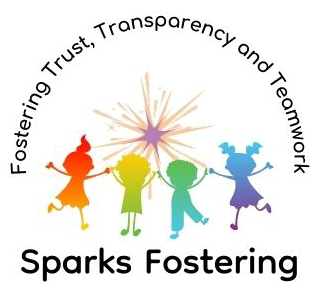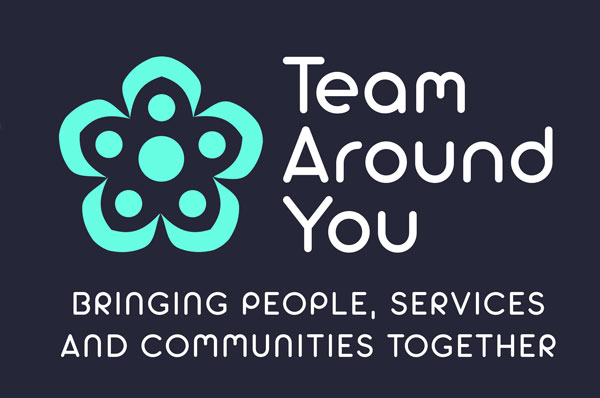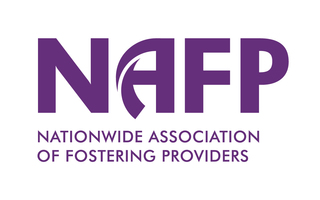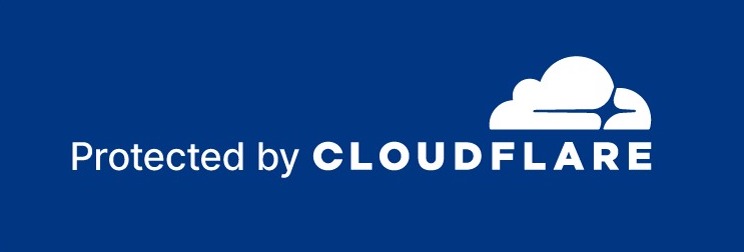Safeguarding Children and Vulnerable Adults
Safeguarding Adults
Foster carers usually care for children (i.e. under age 18); however, some foster carers may care for adults (age 18 and above) under Staying Put arrangements or as part of parent and child arrangements.
Foster carers and fostering staff should keep in mind that the children’s social care team has no legislative authority over adults. This means that adults have full control over where they choose to live and the decisions that they make. Adults are only subject to legislative restrictions in exceptional circumstances and it’s unlikely that foster carers would be asked to support adults with that level of need.
Adults have the same right to be free from abuse that children are entitled to. Foster carers are expected to guide and support the adults in their home because the adults are still considered to be vulnerable and they may not know their rights. Furthermore, some adults may be developmentally delayed – all individuals should be supported according to their capacity and level of needs. Most of the information in the Sparks Fostering Safeguarding Policies also apply to the care of adults in fostering homes.
DBS (police) checks for adults in the fostering home
It’s a regulatory requirement that all adult members of the fostering home have a DBS check. This means that adults who are ‘Staying Put’ or living in the fostering home with their child, should be asked to consent to a DBS check. If the adult refuses, the children’s social worker should be asked if a police check has been carried out previously.
Key principles of safeguarding
The basic principles of safeguarding are:
- Recognise (know what to look for)
- Respond (deal with the immediate situation)
- Report (contact the relevant people and authorities)
- Record (write down relevant information – more serious incidents need more detailed recording)
- Refer (work with the team around the child to identify the relevant services to offer long term support)
Children and vulnerable adults (residents) who are living in fostering homes have already been exposed to some level of harm, and in most cases they have been exposed to a high level of harm or vulnerability. The team around the child (including foster carers) must to do their utmost to ensure that the residents are not exposed to further harm. The main considerations for safeguarding are:
- Residents are supported to take age-appropriate risks.
- Care provided must be safe and effective.
- Action is taken to enable all residents to have the best outcomes.
- Residents are protected from maltreatment.
- Residents are supported to have good health and development.
- Residents feel protected and are protected from harm, including neglect, abuse, sexual exploitation, accidents, bullying and radicalisation.
- Residents can identify a trusted adult who they can talk to about any concerns. They report that adults listen to them, take their concerns seriously, and respond appropriately.
- Any risks associated with residents offending, misusing drugs or alcohol, self-harming, going missing, or being sexually exploited (or any other risks) are known and addressed.
- Risks are identified, understood and managed and the support and care provided help carers to ensure that residents become increasingly safe.
- There is a strong, robust and proactive response from all those working with residents that reduces harm or the risk of harm to them, including self-harm.
- Individual, up-to-date risk assessments address any known vulnerabilities for each resident effectively and set out what action should be taken to address the risks. There are plans in place that reduce harm or the risk of harm.
- Residents who are living with foster carers (or in other types of care provision) are at higher risk of many types of abuse, which places the residents at risk of harm. Sparks Fostering provides specific policies, guidance and training on these areas of concern.
- Sparks Fostering promotes safe care, makes unannounced visits to foster carers at least annually.
- Sparks Fostering ensures that residents have regular opportunities to speak to a trusted professional adult without their foster carers.
- Nothing is more important than children’s welfare.
- Foster carers make positive relationships with children, generate a culture of openness and trust and are aware of and alert to any signs or symptoms that might indicate a child is at risk of harm. This should lead to children feeling confident about themselves and able to tell someone they trust if they are concerned or worried about what is happening to them. Foster carers protect children from significant harm, including abuse, accidents, bullying or negative attitudes.
- The needs of adults do not overshadow the focus on the needs of any children in the home. Providing support to the child does not prevent foster carers or professionals from providing adequate support to any adults in the fostering home.
- Where children and vulnerable adults are listened to, respected and involved positively in family life, conditions that might lead to a family member abusing their position are less likely to exist. This will be enhanced by an appropriate level of supervision of the foster carers by their supervising social worker. All Sparks Fostering foster carers know what constitutes appropriate safe care practice. Foster carers are supported to identify abuse or trauma (including the potential trauma of moving into the fostering home), to report disclosures or abuse and to support residents to recover from trauma. For foster carers who offer placements to children with disabilities, this includes support and advice specifically on issues affecting disabled children.
Safeguarding in foster homes
All staff who work for Sparks Fostering undergo appropriate safeguarding checks (including Enhanced DBS checks) and regular supervision.
Foster carers undergo a comprehensive application process, which includes detailed safeguarding checks, ID checks and lengthy interviews. A health and safety assessment is completed as part of the assessment (to ensure that the home is of good enough standard for fostering) and this is reviewed at least annually. Foster carers are also supervised regularly, and Sparks Fostering also carries out at least one unannounced visit to the home annually. Foster carers are also supported to complete a household safer caring policy (outlining household expectations) and child-specific safer caring policies.
Where Sparks foster carers are asked to identify backup carers (to offer regular childcare support to the children when the foster carer isn’t available), appropriate checks are carried out, which include Enhanced DBS checks (for everyone in the household over age 18), local authority checks, and an interview with a qualified social worker.
These checks and oversight minimise the risk presented by adults linked to Sparks Fostering; however, they cannot rule out risk altogether and so staff and foster carers have to remain vigilant to safeguarding risks. The Sparks Fostering ‘Complaints/Allegations‘ policy should be referred to if there are any concerns about Sparks Fostering staff or foster carers.
Furthermore, when residents join the fostering home, they are shown the Sparks Fostering children’s guide. This includes information about how to report concerns and contact an advocate, and about helplines such as ChildLine. Residents should be able to make private telephone calls, or access a range of relevant websites, in order to seek advice and help. Foster carers support the residents to understand the contents of the children’s guide.
Foster carers and staff are alert to the risk from third parties, including services and organisations. If the children are to be left with others (e.g. tutors, youth clubs), the child’s social worker and Sparks Fostering social workers are to be notified and appropriate due diligence checks should be carried out (e.g. check that DBS checks and safeguarding policies are in place).
If foster carers are not providing appropriate care to residents, the foster carer’s approval would be reviewed (perhaps terminated). Foster carers whose residents are moved to an alternative fostering arrangement (either temporarily or permanently) can access the bridging and/or leave allowances for financial support in the interim (see allowances policy).
Types of abuse
The main categories of abuse are:
- Physical abuse: Harm is caused to the body.
- Emotional (or psychological) abuse: Harm is caused to emotions or thought processes.
- Sexual abuse: Includes harmful direct sexual acts and indirect sexual acts (e.g. sharing and watching sexual images).
- Neglect: When basic care needs (such as food, water, or clean living environments) aren’t met.
Abuse may also be categorised as:
- Domestic violence or abuse: Includes one or more of the above categories of abuse and happens between members of the same family or household.
- Financial or material abuse: Is unreasonable removal of finances.
- Modern slavery: Includes human trafficking, forced labour, domestic servitude, sexual exploitation, or debt bondage (being forced to work to pay off a debt).
- Discriminatory abuse: Unequal treatment based on a characteristic (such as age, gender, sexuality, ethnicity, faith, partnership status, or maternity).
- Organisational or institutional abuse: Overly authoritarian control which causes distress.
- Self-neglect: When someone fails to meet their own needs, thereby causing harm to themselves.
Abuse can happen to people of any age, background, gender or life situation. Foster carers and professionals linked to social care have a statutory (legal) duty to take appropriate action if it becomes known to them that anyone is being harmed, or at risk of being harmed. If foster carers or social care professionals fail to notify services of suspicions of harm, disciplinary action would be taken.
Recognising abuse
Targets of harm often need support to identify the harm and to take appropriate action. Foster carers and Sparks fostering staff must be alert to indicators that residents are suffering from trauma or abuse.
Signs that someone has suffered harm or abuse include:
- Low mood, self-blame or low self-esteem.
- Thoughts or actions of self-harm.
- Poor appetite or excessive appetite.
- Struggling to sleep or disrupted sleep, perhaps with nightmares.
- Refusing to go out, or refusing to go to school.
- Persistent medical problems.
- Losing possessions, or frequently having possessions damaged (without credible explanations).
- Unexpectedly having extra money or losing money.
Residents may also be fearful of talking about their experiences because they are ashamed, or they are fearful of further repercussions. It’s also possible that the abuser has threatened the resident.
Residents who are abusive towards others should be supported to improve their behaviour. Foster carers and staff should remain sensitive to the extreme stressors in the lives of the residents, which can sometimes lead to inappropriate behaviour. That said, foster carers and others in the home should never be made to feel unsafe. All concerns should be reported to social workers so that the care plan can be reviewed.
What children say they need
Children are clear about what they want from an effective safeguarding system. Children have said that they need:
- Vigilance: to have adults notice when things are troubling them.
- Understanding and action: to understand what is happening; to be heard and understood; and to have that understanding acted upon.
- Stability: to develop an ongoing stable relationship of trust with those helping them.
- Respect: to be treated with the expectation that they are competent rather than not.
- Information and engagement: to be informed about and involved in procedures, decisions, concerns and plans.
- Explanation: to be informed of the outcome of assessments and decisions and reasons when their views have not met with a positive response.
- Support: to be provided with support in their own right, as well as a member of their family (including fostering family).
- Advocacy: to be provided with advocacy to assist them in putting forward their views.
- Protection: to be protected against all forms of abuse and discrimination and the right to special protection and help if they are a refugee or unaccompanied asylum seeker.
Showing appropriate affection and managing risk
Foster carers make positive relationships with residents; generate a culture of openness and trust; and are aware of and alert to any signs or symptoms that may indicate a resident is at risk of harm. This should lead to residents feeling confident about themselves and able to tell someone they trust if they are concerned or worried about what is happening to them.
To increase the likelihood of a resident feeling settled in the fostering home, the resident’s identity needs are considered at the point of matching a resident to foster carers. As far as possible the resident will be matched to foster carers of the same or similar religious persuasion, racial origin, and cultural and linguistic background. Where this isn’t achieved, the foster carers will be supported to meet the resident’s needs by accessing information and local resources.
Residents are helped to understand how to keep themselves safe, including when outside of the household or when using the internet or social media.
Any physical affection towards residents should be limited to what is generally considered to be socially acceptable between two unrelated people. So for example, putting an arm around a shoulder or giving a hug (when there is consent) is acceptable. Particular care and sensitivity must be shown towards people who may not be comfortable with physical touch. Physical touch should only happen when the resident wants it and when it’s in their best interest.
‘Foster Care in England‘ (Department for Education, 2018) explains that:
“We are absolutely of the view that physical contact should be encouraged and celebrated in fostering. Children, particularly infants, should be held, cuddled and kissed in the same way parents and carers from all cultures across the world comfort their children. And a growing body of evidence suggests that doing so is demonstrably good for children and can help them to thrive …children who have positive experiences with regards to affectionate touch, free play and family togetherness grow up to be less anxious adults. And oxytocin, one of the so-called ‘feel-good chemicals,’ is released into the body only after physical contact lasting about eight seconds…And the American Journal of Psychological Science has suggested that hugging may offer some protection against upper respiratory infection and illness….Ofsted is not likely to be critical of demonstrations of physical affection. They told us: “It’s important that foster carers are sensitive to the wishes, feelings and experiences of individual children. But we wouldn’t want to see an overly-cautious, inflexible approach to their role that would mean children wouldn’t receive the kind of warm and nurturing care they need and deserve. That includes physical affection.”
Immediate response to concerns, incidents and disclosures
If there is immediate and serious risk of harm to residents, emergency services (999) should be called.
If there is a safeguarding issue which may be linked to criminal activity, foster carers and staff must be mindful of the expectations regarding a criminal enquiry. Foster carers and staff must ensure that they don’t ask leading questions. An example of a leading question would be ‘did your teacher do that to you?’, because it could be perceived that the idea of a teacher being involved was planted in the child’s mind. An example of an open question is ‘who did that to you?’. Any potential evidence must be retained – this includes photos, letters, gifts or any items which are linked to the alleged perpetrator (including if the perpetrator is the child being looked after). Records/accounts of all relevant information must be written up as a matter of urgency – being mindful that the written accounts may be referred to during the court process.
Listening to someone talking about the abuse they suffered is perhaps one of the most difficult aspects of the fostering role. When a resident discloses abuse, the foster carer (or staff member) is expected to remain calm, prioritise what the resident is saying over other activities and listen ‘actively’ (with appropriate eye contact, mirroring what they say when appropriate). If the disclosure is made around other people, a private space should be found to give the resident as much time as they want to talk about their experience. The foster carer or other professional should be careful to not ask leading questions (which direct the resident to a particular answer) and should instead ask open questions. The resident should be comfortable and should volunteer any information provided – the resident should not feel under pressure to share more than they want to. The foster carer should note that the resident has shown a great amount of trust in the adult and so the adult should act accordingly.
In showing sympathy to the child, the foster carer should show some reaction (such as sadness or concern) but must also stay in control of their emotions and not become so overwhelmed that the focus of the discussion turns to the adult. Adults who hear disclosures should seek emotional support from their supervisors and support network.
The child may ask the foster carer or staff member to not share the information with anyone else; however, this cannot be promised, and the foster carer or staff member has to explain to the resident that information will be shared with those who need to know so they can keep the resident (or others) safe from harm.
Recording disclosures and information about risk
Following a disclosure or new information about risk, the details should be written down as soon as possible (using the ‘what/where/when/how’ principles). The details should be emailed to the child’s social worker and the Sparks Fostering social worker as soon as possible (ideally within 24 hours of the incident) and if there are immediate concerns or risk, both social workers should be contacted by phone straight away.
The foster carer and Sparks Fostering social worker would review documents which may need to be updated with the new information, such as the foster carer records; contact records; chronology; injuries and medication record (including body map); risk assessment; safer care plan; care plan; placement plan; personal education plan; and health care plan. Some of these documents can be updated straight away and others are updated at review meetings.
The foster carer may be required to discuss the concerns with the ‘team around the child’ (all professionals involved) and with the resident if it’s necessary to do so. A plan of action would be created from these formal and informal discussions and it is expected that foster carers and Sparks Fostering social workers would work to achieve the targets in these plans, which would be reviewed at least at every foster carer supervision.
The Sparks Fostering social worker will notify the agency Safeguarding Lead (the registered manager) of any safeguarding issues.
The Safeguarding Lead would notify Ofsted of:
- Death or serious illness of a resident.
- Offending or safeguarding issues in relation to a member of staff.
- Outbreak at the fostering home of serious infections
- Allegations that the resident has committed a serious offence or prostitution.
- Serious incidents resulting in police attending the fostering home.
- Children missing from placement.
- Any serious complaints against foster carers.
- Child protection enquiries pertaining to children placed with foster parents.
If a member of staff, or a foster carer, fails to report an incident of abuse or neglect, or suspected abuse or neglect, of a resident living with foster parents (or anyone else) to an appropriate person (in a timely manner), this is a grounds upon which disciplinary proceedings would be instituted.
Responding to complaints or allegations
If a resident reports a complaint or allegation against a staff member or foster carer, the Sparks Fostering ‘Complaints/Whistleblowing’ Policy should be referred to.
Safeguarding when matching residents with fostering homes
Safeguarding residents starts before they join the fostering home. Extra care is taken when finding homes for particularly vulnerable residents. Further information about safeguarding considerations when matching can be found on the Sparks Fostering Policy ‘Matching Children to Fostering Homes‘. Guidance for matching and caring for residents in specialist placements is found in the ‘Child’s Needs‘ section of the website resources.
Additional resources (optional)
CASE REVIEWS
The Child Safeguarding Practice Review Panel reviews cases where children have died or been seriously harmed, and abuse or neglect is known or suspected. The duty to notify serious incidents to the Panel sits with local authorities. Following a serious incident notification, local safeguarding partners are required to undertake a rapid review within fifteen working days.
Child safeguarding practice review annual report.
NSPCC summary of case reviews.
COERCIVE CONTROL
The impact of coercive control on children and young people. Coercive control is a form of domestic abuse that can often be overlooked. This guidance looks at the themes around coercive control including: controlling and isolating behaviours; using threats and coercion; emotional abuse; economic and financial abuse; and services missing opportunities to support victims and survivors.
CONSENT
GROOMING
Protect children from grooming.
STOP time resources to prevent grooming.
NEGLECT
A short clip from ‘The School of Life’ about the impact of neglect (and the still face experiment).
First-person experiences: Robin (caring for severely neglected children who returned to their own family). From ‘If you don’t stick with me, who will? The challenges and rewards of foster care’ BAAF. Paperback available from Amazon for £3.14. PDF from corambaaf.co.uk for £7.50.
NSPCC information about neglect.
NSPCC learning from serious case reviews, neglect.
PHYSICAL ABUSE
Bruising in non-mobile infants.
Effects of corporal punishment.
SEXUAL ABUSE
(Also see ‘Modern Slavery’ Policy).
Children now ‘biggest perpetrators of sexual abuse against children’ – an article in The Guardian.
In collaboration with young survivors in Essex, the Centre for Action on Rape and Abuse, and ‘ICENA’, a series of five animated videos to support professionals working with children and young people to understand the impacts of sexual violence.
Communicating Effectively with Children.
Independent-inquiry-into-child-sexual-exploitation-in-rotherham.
It’s Not OK (North West based police initiative to address sexual abuse).
Key messages from research on the impacts of childhood sexual abuse (from the Centre of Expertise on Child Sexual Abuse).
Key messages from research on intra-familial child sexual abuse (from the Centre of Expertise on Child Sexual Abuse).
NSPCC briefing ‘Child sexual exploitation: Learning from Serious Case Reviews‘.
‘PANTS’ resources from the NSPCC help to teach children how to keep themselves safe.
Personal story of recovery from sexual abuse by her father, Alice.
Personal story of recovery from sexual abuse, Kirsty.
Serious Case Review, Coventry 2020, intra-familial sexual abuse disclosed to foster carer.
Sibling sexual behaviour: A guide written by the Centre of Expertise on child sexual abuse.
Signs of CSA (for information only, relevant information to be included on child’s file directly).
‘Someone to lean on: Advice for professionals giving therapeutic support to children who have been sexually abused‘ – top tips by the NSPCC.
The Centre of Expertise on Child Sexual Abuse publishes lots of useful research.
The Survivors Trust (support for those who have suffered rape or sexual abuse).
SEXTING
NSPCC guidance ‘Sexting: Advice for professionals‘.
VERBAL ABUSE
How harsh words can damage your child, and how to avoid them – article by ‘Parenting Matters’.
Shouting at children can be as damaging as physical or sexual abuse, study says. An article in The Guardian.
MISC.
‘Child abuse and neglect prevention‘ – resources produced by The Centers for Disease Control and Prevention.
Duties to report child abuse in England. Information from House of Common Library.
Keeping your child safe (from Family Lives).
Learning from Serious Case Reviews (by the Department for Education).
Listening to children’s disclosures (by the NSPCC).
NSPCC safeguarding online training.
NSPCC serious case review briefings.
Podcast: Safeguarding adults and children – half hour podcast produced by the NSPCC addressing how to safeguard adults and children in inter-generational or mixed-age group organisations.
Protecting children from abuse by someone in a position of trust or authority (guidance from NSPCC).
The twisted case of Ruby Franke – Everything we know. 25min video by ‘Law & Crime Network’. Ruby and his wife had a popular YouTube channel about parenting. Ruby and her business partner were later convicted of child abuse.
Why language matters: how ‘toxic trio’ is unhelpful and inaccurate. Blog by NSPCC.







